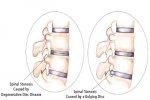Home » Blog
| Stem Cell, PRP, Acupuncture in Queens & Long Island, New York
Blog | Stem Cell, PRP, Acupuncture in Queens & Long Island, New York
Upper back pain symptoms can differ from person to person. For some, the pain might be mild and go away within a couple days, but for others, the pain can worsen and interfere with daily tasks. Upper back pain symptoms and treatment plans can vary greatly depending on the problem’s underlying cause.
Read more
For everyday causes of lower back pain, standard at-home pain management is a reasonable approach. In fact, most cases of lower back pain are caused by a muscle strain and will get better relatively quickly and do not require treatment from a medical professional. If pain has lasted longer than one to two weeks or begins to interfere with one’s mobility and daily activities, or if there are troubling symptoms, seeking care from a medical professional is recommended.
Read more
People who play sports or are physically active are familiar with sprains (a stretched or torn ligament) and strains (a stretched or torn muscle or tendon). Both cause swelling and inflammation. Sprains can give you bruises. Strains may trigger muscle spasms. Use the RICE method for early treatment -- rest, ice, compression, and elevation. Take an over-the-counter (OTC) pain reliever. See a doctor if you have numbness or tingling, you can't move a joint, or it doesn't get better within a week.
Read more
The thoracic spine also referred to as the upper back or middle back is designed for stability to anchor the rib cage and protect vital internal organs within the chest. Compared to the neck (cervical spine) and lower back (lumbar spine), the upper back is remarkably resistant to injury and pain. When upper back pain does occur, it is typically due to long-term poor posture or an injury that overpowers the thoracic spine’s sturdiness. This article explores various symptoms of upper back pain, potential causes, and modern diagnostic methods and treatments.
Read more
There is a wide range of nonoperative treatments for spinal stenosis. The more common options include:
Exercises - A suitable program of physical therapy and exercise is a component of almost every spinal stenosis treatment program. While the spinal stenosis exercises are not a cure, it is important for patients to remain active as tolerated and not become additionally debilitated from inactivity.
Read more
The cause of osteoarthritis is now thought to be a combination of these factors: 1. Genetics - Your genes may be involved in the development of osteoarthritis, though researchers are still working to fully understand this connection. It may be that you have an abnormality in the makeup of your cartilage, or that your bones fit together abnormally at the joint.
Read more
Dysfunction in your cervical spine can lead to pain that radiates through your shoulders and down your arms. If this is the case for you, an injection of cortisone steroid can be a great short-term solution. Read on for a step-by-step overview of this common procedure. In your cervical spine (neck), there is a sac called the dura that contains your nerve roots, cerebrospinal fluid, your spinal cord, and nerves.
Read more
There are a number of potential symptoms of spinal stenosis, and one's specific symptoms are mainly determined by the location and severity of the stenosis in the spine.
Read more
Osteoarthritis (OA) is a chronic degenerative disease. It causes damage to your joints, including those in your: hands and fingers, knees, hips, lower back, neck, Treatment for OA focus on managing your symptoms. The disease can’t be reversed. The progressive degeneration of OA has been classified into four stages. The first stage, with no joint damage, is called Stage 0. Stage 4 is the most advanced and severe stage of OA. Here are some signs of stage 4 OA.
Read more
Most cases of lumbar herniated disc symptoms resolve on their own within six weeks, so patients are often advised to start with non-surgical treatments. However, this can vary with the nature and severity of symptoms.
Read more
Love this Post? Spread the World






















